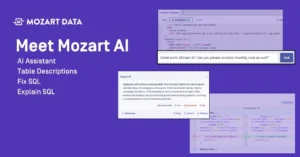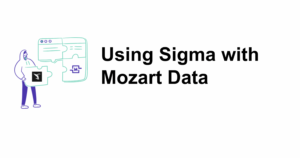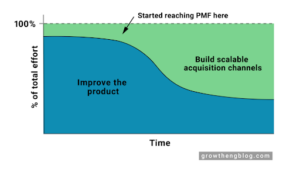What is data security and privacy?
Data security is the practice of protecting sensitive data from unauthorized access, malicious attacks, or exploitation of data in any other forms. The security aspect makes sure that bad actors cannot infiltrate databases and systems to access or manipulate the data. Data privacy, therefore, is achieved when proper security measures are in place as bad actors will not be able to see, use, or otherwise access the sensitive data in any way.
Data security is based on three foundational principles, also called the “CIA triad:”:
- Confidentiality
- How do you know only the appropriate users have access to the data?
- How are you monitoring and alerting if data is breached?
- Integrity
- How do you prevent the data from being erased or modified by a bad actor?
- How do you transfer data securely?
- Availability
- How is the data available to you when you need it?
Why is data security important?
Practicing appropriate data security measures enables your company to generate trust with your customers, meet industry compliance requirements, and even boost investor appeal if you’re undergoing funding rounds.
In fact, data security is so important that 71% of countries around the world have legislation about data security and privacy, and another 9% have draft legislations being built.
In Canada, the Personal Information Protection and Electronic Documents Act (PIPEDA) is one of the main compliance frameworks for data protection. Other major frameworks from around the world include:
- General Data Protection Regulation (GDPR) — Put into effect by the European Union (EU) in 2018, the GDPR is one of the most comprehensive and strict data privacy laws in the world.
- Health Insurance Portability and Accountability Act (HIPAPA) — Put into effect in 1996, this is a US legislation to specifically protect personal health and medical data.
- Children’s Online Privacy Protection Act (COPPA) — This is another US legislation, put into effect in 1998 to protect children under 13 years of age on the Internet.
Six types of data security measures
- Access Control — This measure ensures only authorized users have access to the data they need. Following a practice of “least privilege” means users shouldn’t be granted access to information that they don’t need access to. If they later need access, they can be granted it temporarily until they no longer need it.
- Authentication — Authentication goes hand in hand with access control. Whereas access control limits how much information authorized users can view, authentication ensures the correct, authorized person is actually the one viewing the data. This can be done in many ways, commonly as a password, multi-factor authentication systems, or use of security questions.
- Backups and recovery — In most cases, data that’s stored by a company is important for analytics, customer relationship management, and more. This measure ensures the ability to recover important data from the system or application if an error occurs. Data resiliency means your data can be securely recovered after a system failure.
- Data erasure — Many legislations and compliance frameworks state specific requirements for how long data is allowed to be stored before it can be securely deleted. In some cases, data may need to be deleted immediately. In others, it may need to be stored for years.
- Data masking — Hiding the data through obscuring letters or numbers with proxy characters is an additional security measure to block unauthorized users from seeing data they don’t have access to.
- Encryption — This is a method of securing data by making it unreadable as secret code. When the system ships off the data, it’s encrypted so that it’s not readable until the other system receives the code, as well as the “secret key” to successfully decrypt and understand the data.
Nine best practices for data security management
1. Create data governance policies
Data governance policies outline the strategies, processes, and standards that are integrated across an organization to ensure the data remains secure. The strategy that your data governance strategy takes can have significant impacts on your business outcomes, especially if you’ are managing personally identifiable customer data or pursuing a compliance audit and certificate.
2. Implement a policy of least privilege
According to a 2021 Varonis study, 33% of all folders used within a company are open to everyone within the organization. This means even the new marketing intern can access confidential financial data from customers and download, share, or modify it however they like!
Obviously, this poses a huge risk to organizations. One way to mitigate this is by implementing a policy of least privilege, which only allows users to have access to the data that’s vital for the success of their role. Any optional or unneeded data remains locked away until actually needed. To integrate this practice efficiently, it’s ideal to have one person who manages the access for all people across an organization. As soon as someone onboards or offboards into the company, this person would also be responsible for enabling and disabling access as soon as possible.
3. Identify and classify sensitive data
Understanding the data that your business manages and stores is the first step to seeing where you need to integrate data security measures. Look at everything from customer information in the marketing and sales funnel, all the way to how you communicate with your customer if they choose to no longer be a client of yours. Identify and classify sensitive data throughout the entire customer lifecycle to ensure that it’s properly managed and stored, and only authorized users have access to that data.
4. Use data encryption
Data encryption is an important part of ensuring data security in your organization and it’s quite easy to implement through a data encryption tool. Using a data encryption tool across all of your processes will help keep your data more secure, no matter where it resides in your system.
5. Backup your data
Data loss is a serious risk posed to many companies with the growing threat of cyberattacks over the last few years. Regularly backing up your data (at least weekly) will ensure you have a recent version of your system to reset to in case of an attack or internal failure. If you’re about to perform any significant updates or changes to your system, website, or application, consider also performing a backup just in case anything goes sideways.
6. Use RAID on your servers
RAID stands for Redundant Array of Independent Disks. Using RAID on your servers automatically ensures data is placed in multiple areas within the system, which is another way to prevent data loss in addition to regularly backing up your data. The practice of keeping data in at least two (usually more) places within your database or system in case of corruption or data loss is called “data redundancy,” and is one of the key benefits of using RAID.
7. Maintain the availability of your data
Ensuring all data is available anytime as needed is a mission-critical priority for any company. Your employees, clients, and vendors all need to be able to access relevant data at any point in time, on-demand. When this data becomes unavailable for any reason, you risk losing valuable relationships with your customers and you compromise your ability to ensure data is secure. Properly formatting your data, using a modern and fast infrastructure, and having a qualified IT personnel responsible for the availability of data are three ways you can begin ensuring better availability.
8. Regularly test for vulnerabilities
Databases can be home to a ton of unidentified vulnerabilities, such as weak passwords, unnecessarily enabled access features, privilege escalation opportunities, and poor encryption codes, among others. Penetration testing is a deep assessment on the security of your system by allowing ethical hackers to attempt to break into your system. When the hacker finds a vulnerability, your team will be notified and given a recommended solution for patching. Practicing penetration testing on a quarterly basis allows your team to continuously have insight into new, existing, and closed vulnerabilities to keep bad actors from accessing your system.
9. Apply a proper patch management policy
A patch management policy outlines the processes and requirements for identifying, testing, deploying, and implementing patches. Most organizations have service level agreements (SLAs) in place as part of their patch management policies. An organization can hold both internal and external SLAs which dictate the appropriate amount of time to patch up various vulnerabilities, depending on their severity level. For example, a critical-level vulnerability should be patched immediately and a low-level vulnerability should typically be patched within 180 to 270 days.
Conclusion
Data security is a far-reaching and complex consideration which has implications on all departments from IT and engineering, to accounting or finance, and even to marketing and sales.! Ensuring that you are making the right decisions when it comes to your customer data will help your business to scale securely, meet more investor requirements, and even earn compliance audits easier in the future.! Unsure if your data is secure? Book a call with Software Secured, a leading penetration testing and application security company based in Canada, to schedule a pentest that will identify existing security gaps and help prepare your development team for more secure coding in the future.


